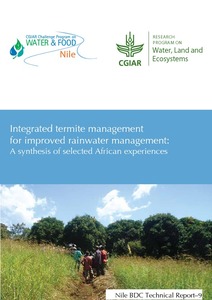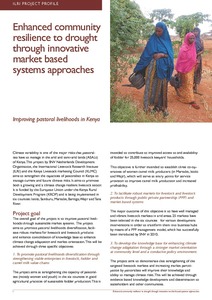Location
Vision, mission and strategy
ILRI's strategy 2013-2022 was approved in December 2012. It emerged from a wide processof consultation and engagement.
ILRI envisions... a world where all people have access to enough food and livelihood options to fulfil their potential.
ILRI’s mission is... to improve food and nutritional security and to reduce poverty in developing countries through research for efficient, safe and sustainable use of livestock—ensuring better lives through livestock.
ILRI’s three strategic objectives are:
- with partners, to develop, test, adapt and promote science-based practices that—being sustainable and scalable—achieve better lives through livestock.
- with partners,to provide compelling scientific evidence in ways that persuade decision-makers—from farms to boardrooms and parliaments—that smarter policies and bigger livestock investments can deliver significant socio-economic, health and environmental dividends to both poor nations and households.
- with partners,to increase capacity among ILRI’s key stakeholders to make better use of livestock science and investments for better lives through livestock.
This is ILRI’s second ten-year strategy. It incorporates a number of changes, many based on learning from the previous strategy (2000–2010, initially produced in 2000 and modified in 2002), an interim strategy (2011–2012) and an assessment of the external and internal environments in which the institute operates.
Members:
Resources
Displaying 316 - 320 of 1152Integrated termite management for improved rainwater management: A synthesis of selected African experiences
In eastern Africa, termites are perceived by farmers, livestock keepers, and many development agencies as serious agricultural pests that destroy pasture, crops and wooden infrastructure. Commonly use control measures have proven to be ineffective. When the CGIAR Challenge Program on Water and Food (CPWF) undertook research aimed at increasing agricultural water productivity in eastern Africa, termites destroyed early experiments designed to rehabilitate degraded land and increase water productivity.
Enhanced community resilience to drought through innovative market based systems approaches: Improving pastoral livelihoods in Kenya
Participatory video in the Nile Basin Development Challenge
This digital story was produced to communicate work done by the Nile Basin Development Challenge (NBDC), specifically activities undertaken by the team working on 'Technologies, Institutions and Policies'. The NBDC aimed to improve the livelihoods of farmers in the Ethiopian highlands through land and water management and was funded by the Challenge Program for Water and Food. For more information see: http://nilebdc.org
NBDC experiences with fodder development in Fogera, Ethiopia
This digital story was produced to communicate work done by the Nile Basin Development Challenge (NBDC), specifically activities undertaken by the team working on 'Technologies, Institutions and Policies'. The NBDC aimed to improve the livelihoods of farmers in the Ethiopian highlands through land and water management and was funded by the Challenge Program for Water and Food. For more information see: http://nilebdc.org
NBDC experiences with fodder development in Diga, Ethiopia
This digital story was produced to communicate work done by the Nile Basin Development Challenge (NBDC), specifically activities undertaken by the team working on 'Technologies, Institutions and Policies'. The NBDC aimed to improve the livelihoods of farmers in the Ethiopian highlands through land and water management and was funded by the Challenge Program for Water and Food. For more information see: http://nilebdc.org





